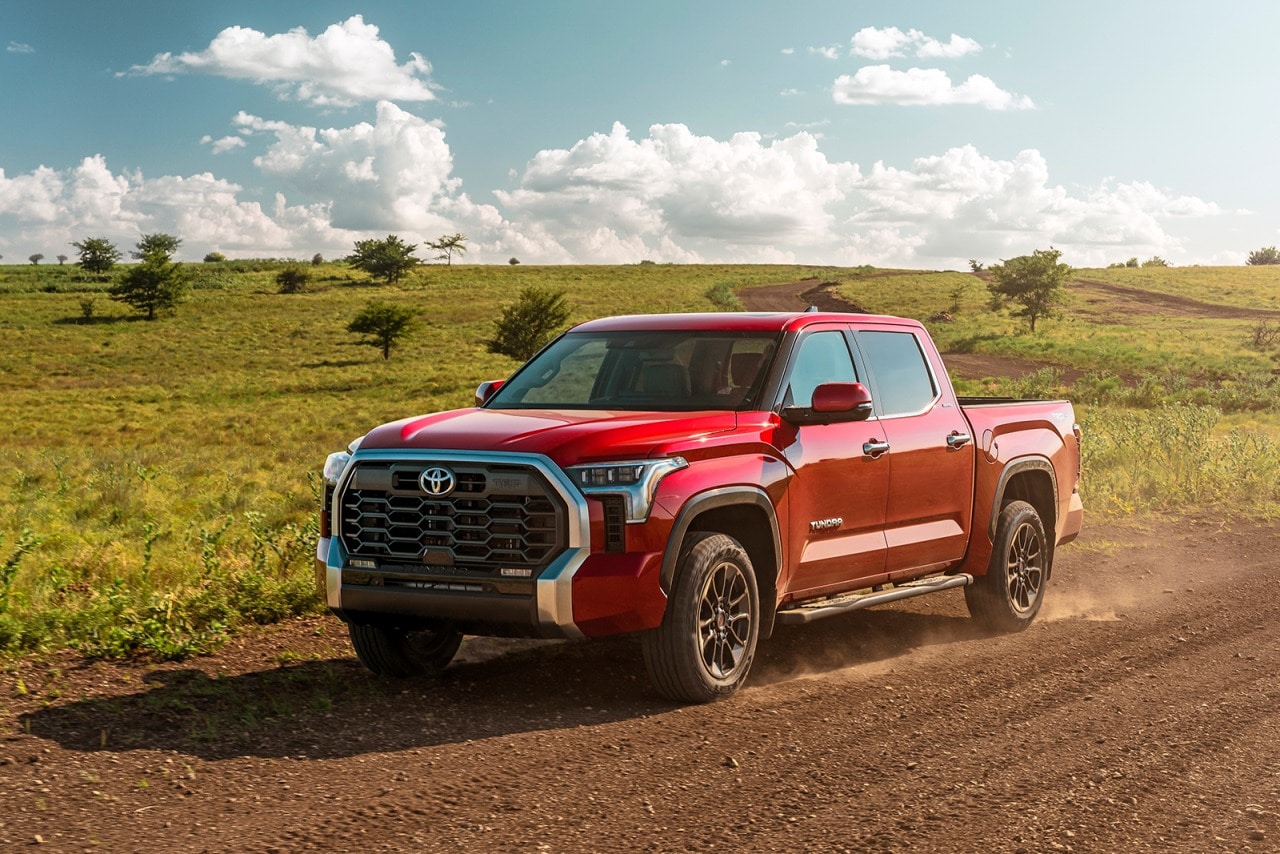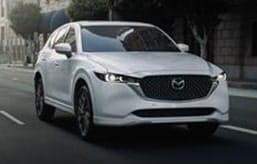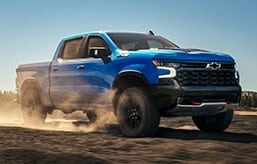- Completely redesigned Toyota Tundra inside and out
- Twin-turbo V6 comes standard, with a powerful hybrid version optional
- Big updates to the frame, suspension, transmission and steering
- Introduces the third Tundra generation for 2022
2022 Toyota Tundra Turns Over Several New Leaves
No longer the ancient truck in town
What is the Tundra?
A new-generation Toyota Tundra is finally here for 2022. This is Toyota's full-size truck, of course, and this new third-generation truck is a welcome successor to the long-running second generation that ran from 2007 all the way to 2021. Recent years of that old Tundra trailed behind the Chevrolet Silverado 1500, Ford F-150 and Ram 1500 in just about every category.
Key enhancements for the new 2022 Tundra include a new rear suspension design, a 10-speed automatic transmission, aggressive new looks, a more modern interior design and two twin-turbocharged V6 powertrains — one of which is paired with a hybrid system. Expect the new Tundra to reach dealerships by the end of this year.
How does the Tundra drive?
Buh bye, V8. The 2022 Tundra ditches the 5.7-liter workhorse that came standard on last year's model, replacing it instead with V6 power. Buyers can choose one of two options: a turbocharged 3.5-liter V6 (389 horsepower, 479 lb-ft of torque) or that same engine paired to a hybrid powertrain (combined output of 437 hp and 583 lb-ft). Both are matched to a 10-speed automatic transmission that makes its debut in the Tundra.
The standard turbo V6 and 10-speed transmission are a robust combination on the road, providing satisfying thrust and quick and smooth shifts. Power is only up slightly from the previous outgoing V8, so the standard engine won't win any acceleration awards, but it doesn't feel stressed at full throttle either.
If you want a bit more excitement coming from under the hood, you'll find it with the hybrid. The extra power provided by Toyota's hybrid system helps the Tundra accelerate quickly off the line, with excellent in-town driving manners. The added torque means smoother transitions when pulling away from a stop, and open-throttle acceleration is a bit quicker, too. Toyota won't say yet just how much the hybrid system will improve fuel economy, but we'd say it's worth a test drive purely because of its extra power.
How comfortable is the Tundra?
Toyota also made several key changes to the Tundra's underpinnings that improve on-road performance. It replaced the old-school leaf-spring rear suspension — commonly found on full-size trucks due to their durability and toughness — with modern coil springs in the back. The Tundra now joins the Ram 1500 and F-150 Raptor as the only trucks in this class to use rear coils. While the change in ride quality isn't profound, it's certainly noticeable. The Tundra is much more comfortable over broken pavement than ever before. The ride quality is only a bit bouncy over the roughest of surfaces. We wouldn't call the Tundra the most comfortable truck in the class, but it's certainly much improved over the prior generation.
For all the talk about hybrid this and coil-spring that, the Tundra is hiding another big secret underneath its body. The previous generation used a three-section frame to form the bones of the truck, with a traditional "boxed" zone in the center for strength and more flexible portions in the front and rear for ride quality. The 2022 Tundra kicks that structure to the curb. Toyota has adopted the fully boxed frame similar to those used by its competitors to pursue maximum toughness and capability (more on the capability part in a bit).
How's the Tundra's interior?
As with the outside, Toyota drastically reworked the Tundra's interior styling. The neatly designed steering wheel is a high point. It features large, chunky buttons with clear labels. The toggle-style switches across the dashboard work well and are easy to reach, with still one chunky volume knob remaining to the left of the center touchscreen.
As with many full-size pickups, there's plenty of space for adult passengers in both rows. The sliding tray in the center bin that is supposed to improve storage access is a talking point and a differentiator between the Tundra and other trucks, but the plastic used in its construction feels cheap to the touch. The same is true for some of the Tundra's buttons — especially depending on the trim level of Tundra you select — but it's not a deal-breaker.
Despite all of the improvements, the Tundra's cabin doesn't quite meet the standards set by Ford and Ram competitors, both of which have upped the level of refinement we expect from this class in recent years.
How's the Tundra's tech?
The 2022 Toyota Tundra is leaps and bounds more technologically impressive than its predecessor. Wallet-friendly versions of the Tundra come with a 4.1-inch driver information display and an 8-inch touchscreen, which runs a new version of the company's Audio Multimedia operating software. On the options list are a fully digital 12.3-inch driver display and an enormous 14-inch touchscreen mounted to the center dash. The upgraded touchscreen is loaded with a high-resolution display and brings quicker responses to user inputs.
The 14-inch screen, which is the only one we've tested, performs admirably. The system responds quickly to inputs, and to our surprise, the screen doesn't wash out in the sun despite its location high up on the dashboard.
No matter which boxes you tick, all Tundras feature wireless Apple CarPlay and Android Auto smartphone integration, along with a voice recognition system that allows for more natural language and commands. With the larger screen, simply say, "Hey, Toyota" while driving and you'll get access to the full voice command suite. Unlike some luxury systems like Mercedes' MBUX, where you say, "Hey, Mercedes" and a lightning-fast response pops up on screen, the Toyota system takes a bit more time. Despite a bit of lag time, it is still a huge upgrade over Tundras of old.
How are the Tundra's towing and hauling?
Thanks to the changes to the structure that the Tundra is built on, all the numbers go up significantly. Maximum towing capacity increases from just over 10,000 pounds in some versions of the 2021 Tundra to an even 12,000 pounds in certain 2022 models. Max payload grows from 1,660 pounds to 1,940 pounds.
To help those serious towers among us, Tundras in the SR5 trim and up come standard with an integrated trailer brake to improve stopping power with a heavy load. An adaptive air suspension is also available, which helps level the truck after a heavy trailer is attached to the hitch. With the adaptive air suspension and the torquey V6, towing a large trailer is relatively easy. The 10-speed automatic handles large loads on steep grades well, selecting the proper gears for the job and shifting quickly when a change is needed.
Another important change can be found in the bed itself. All versions of the 2022 Tundra come with a composite bed. As opposed to traditional steel beds, the composite material prevents damage from dents and rust without the need for an additional protective bedliner. We've tested the material many times in the smaller Toyota Tacoma and come away impressed. One trend that competitors have embraced but Toyota bucks is the adoption of multifunctional tailgates. The Toyota's gate won't swing out or split down the middle, but it is 20% lighter than the one on the previous Tundra. There is also a small button on the side of the taillight that helpfully releases the gate.
How economical is the Tundra?
Neither of the Tundra's engine options has been officially rated for mpg estimates by the EPA yet. Early estimates from Toyota, however, are that the standard V6 engine will return 20 mpg combined with rear-wheel drive and 19 mpg combined with four-wheel drive. These figures are broadly comparable to the fuel economy of rival trucks with similar power output.
The hybrid version is called i-Force Max, and while it hasn't been rated by the EPA or Toyota yet, we're hoping it will bring these numbers up and give the Tundra something to rival the higher fuel economy powertrains in rival trucks, such as the hybrid version of the F-150 or diesel six-cylinder in the Ram 1500. The Tundra's hybrid can generate electricity using regenerative braking in normal driving conditions and even has a low-speed, electric-only EV driving mode. It uses a nickel-metal hydride battery, or Ni-MH, stored in the floor under the rear seats to store power.
Edmunds says
The 2022 Toyota Tundra makes big changes to its frame, suspension, bed, steering, interior and more. These updates make the redesigned Tundra much more competitive alongside modern trucks than its ancient predecessor. Is it a much better truck than ever before? Yup. But it's just not enough to catapult the Tundra to the front of the line. In many ways these advancements only catch the Toyota up with the times.



 by
by